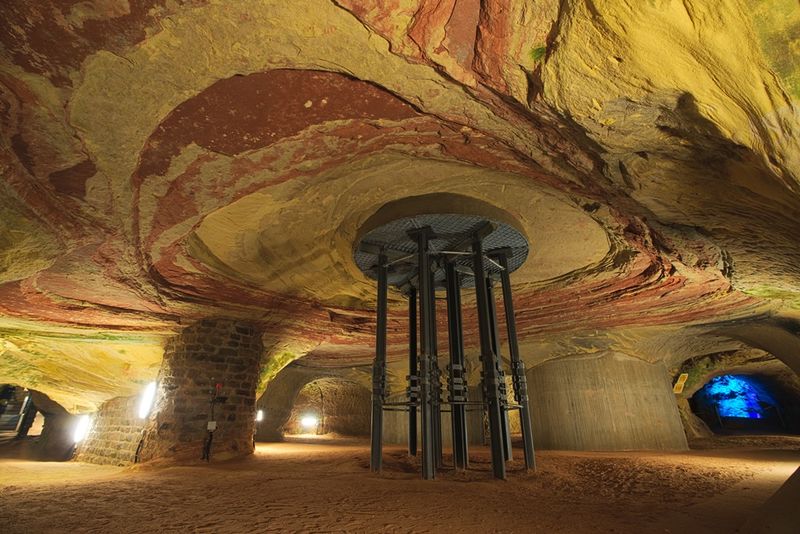Sights
Startseite > Sehenswürdigkeiten > Homburg castle mountain caves
Homburg castle mountain caves
Europe's largest red sandstone caves are located below the ruins of the Homburg Fortress on the Schlossberg. Mysterious corridors, created by man, lead visitors into imposing domed halls, which have a special charm due to the yellow and red coloring of the sandstone.
- Schlossberg-Höhen-Str. 1 ,66424 Homburg
It is possible that the first tunnels dug into the castle hill served as a defense for the medieval Hohenburg, which gave the town its name. After the death of the last Count of Homburg in 1449, the medieval castle complex and the town fell to the Counts of Nassau-Saarbrücken. In the Reunion period, the second half of the 17th century, the French King Louis XIV had his master fortress builder Sébastien Le Prêstre de Vauban develop the castle, which had been remodeled by the House of Nassau-Saarbrücken, and the city into a modern fortress. The fortifications were razed in 1697 and 1714. Presumably from the middle of the 17th century onwards, targeted underground mining of quartz sand began in the Schlossberg, which was probably used for glass production. After the French period, mining was only intermittent to extract scouring sand for cleaning purposes and molding sand for the iron industry on a small scale. After the caves fell into oblivion for some time, the present entrance was rediscovered in the 1930s. During the Second World War (especially 1944-1945), the population of Homburg found shelter from air raids in the caves. Adjacent to the sandstone caves is an equally impressive bunker area, which was built in the early 1950s for the government of the Saar region at the time. In addition to their eventful history, the Schlossberg caves also offer a unique insight into the period of formation of the red sandstone around 250 million years ago, shortly after the decisive turning point from the Permian to the Triassic. At that time, the current location was in the middle of a European-wide desert area. The caves run through remnants of former sand dunes. In between are red-colored alluvial sand deposits. In many cases they contain striking ripple patterns, fossilized ripple marks formed in the sandy substrate of shallow desert lakes. And in some places you can also discover footprints of small lizards that lived in this desert landscape. The Schlossberg caves have recently undergone extensive renovation with generous support from the Ministry of Economics. The newly created concrete and steel safety facilities not only provide the best possible protection in the caves, they are in turn worth seeing components of this unique visitor experience.


By loading the map, you agree to Google's privacy policy.
Learn more

